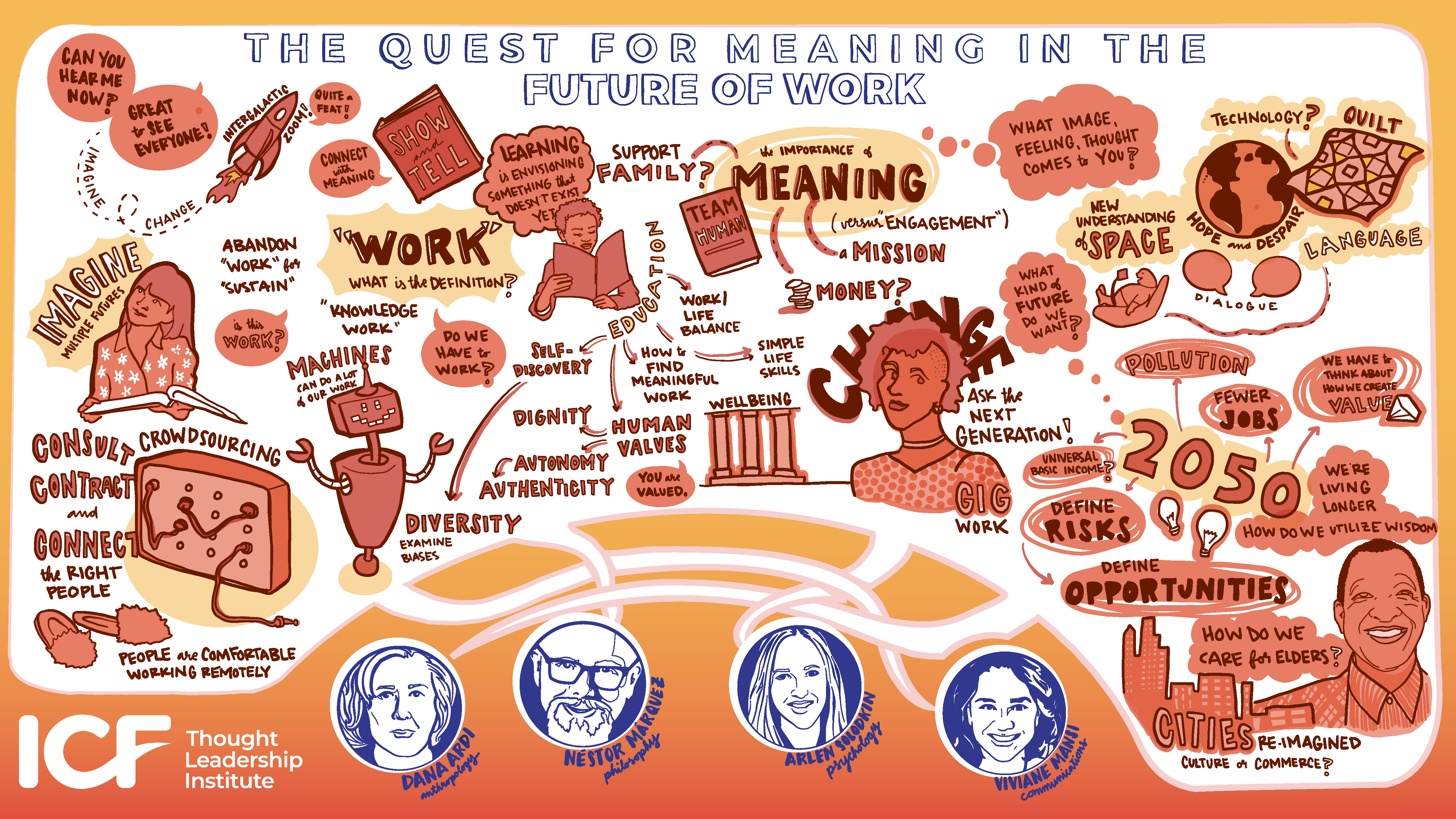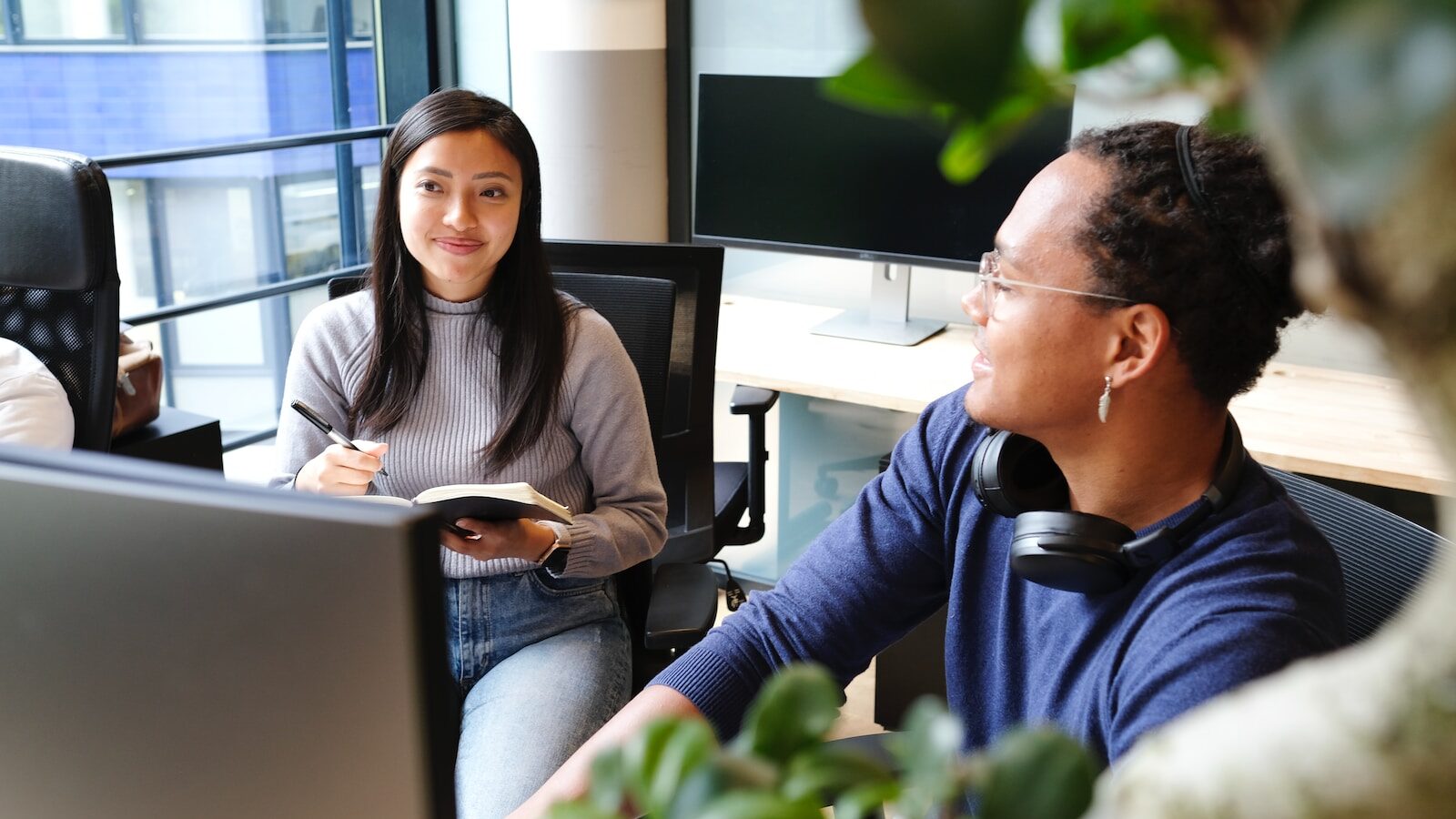Preparing children for the future requires imagination
Some experts believe that children under the age of five will have jobs that have not yet been invented. Preparing children for the future requires imagining possibilities that do not yet exist.
Challenge:
The future of work may look very different from our current standards.
Opportunity:
Parents and children can playfully imagine future scenarios.
Impact:
Children can learn to appreciate their strengths and embrace change.
Wisdom Weavers
It is often said that “children are our future,” and in a world where the future is rapidly transforming, it is especially important to prepare them for what lies ahead. However, helping children develop the right skills is especially problematic when we don’t know the types of jobs they will one day hold. Some experts advise that children who are currently under the age of five will likely have jobs that have not yet been invented.
In our 2021 Future of Work Convening, Wisdom Weavers embraced the unknown with a playful curiosity, advising that future occupations may not be in traditional settings — and they may not even be located on this planet. More practically, they emphasized the importance of education and a mindset of continuous, lifelong learning. Specific skills and capabilities that will help young people adapt over their lifetimes include curiosity, problem-solving, critical thinking, and resourcefulness. The United Nations Global Goal #4 of Quality Education aims to ensure that all people have access to equitable, high-quality learning across their lifespan.
School subjects that set children up for the future might not be the same classes that they find personally fulfilling
Finding the right balance of coursework that motivates children to learn while ensuring that they acquire critical skills will become an increasingly important task for educators and parents.
Wisdom Weaver Dr. Marcus Ranney explains the complex set of decisions parents face in preparing children for an unknown future.
“We have this chat actually as parents and I’m sure many parents have this chat around what is the future of their work going to be, what do we even advise them in terms of subjects to pick up [in] school and what should they be learning, how should they be learning, etc.”

Wisdom Weaver Dr. Dana Ardi finds that preparing children to thrive amidst rapid change is best achieved by teaching them to become aware of their unique strengths and to embrace the learning process.
“We have to start looking at children and helping them to identify their skills and talents, giving them the tools to acquire knowledge because jobs that we may have in twenty-five years may not be the jobs you envisioned in fifty years. So how do you continually become a learner, re-skill and then take responsibility [for ongoing learning]?”

As machine learning and artificial intelligence propel increasingly rapid technological advances, future scenarios that once seemed preposterous become possible
Marcus encourages his children to expand their notions of what is possible and to entertain ideas of the future that sound almost like science fiction today.
“In suggesting to my kids that they don’t plan for working on us, they should be planning a career, which will exist on hopefully the moon and I’d be very happy to be there with them, and maybe Mars in their lifetimes for sure, maybe not mine in terms of proper living and working. So that’s this healthy tension that we have in our house of not limiting the sphere to just consider what we know today, but it could be anything and for me and us it’s about even choosing a different planet to where we even live right now.”

Forming positive and hopeful views around work can affect how young people interpret change as rich with possibility instead of undermining the old ways of doing things
Dana believes that teaching work-life integration at an early age can encourage young people to embrace their own ability to shape meaning across their careers.
“And so we have to teach people early on, you know, starting in just the youngest days that work life integration, that work is part of your life. And so you have to find ways of taking control of your own destiny in that regard.”

Wisdom Weaver William Ayot believes the challenges society faces over the next few decades will transform current methods of parenting and educating children.
“Imagine if I were to throw myself forward 20–30 years or whatever that might be, I think we will have been through some kind of a fire. We are going to end up teaching our children to be very different human beings. . . I do have hope, and that could be very beautiful actually.”

Coaching Empowers People
To help children plan for the future, we can teach them to embrace their imagination and to entertain ideas that might sound silly now — but may not be so silly in a few decades. Through coaching, parents and educators can learn to encourage children to follow less conventional learning paths and to increase their personal comfort with talking about the unknown.
Parents, guardians, and educators can all utilize programs to better prepare their children for the future of work through identifying skills that will prove invaluable in the future. The World Economic Forum has compiled a list of seven skills that children will need as the future of work changes. Although technology’s impact on the job market cannot be completely predicted, the World Economic Forum estimates that 65% of children entering elementary school will eventually hold jobs that do not currently exist.
Finding comfort and stability amid all of this change will not be easy. Coaches can work directly with parents and educators to adopt positive beliefs about their ability to adapt while strengthening their optimistic outlook. This type of support can help people feel more certain about their own capabilities so that they may transmit the same sense of self-assurance to their children.




